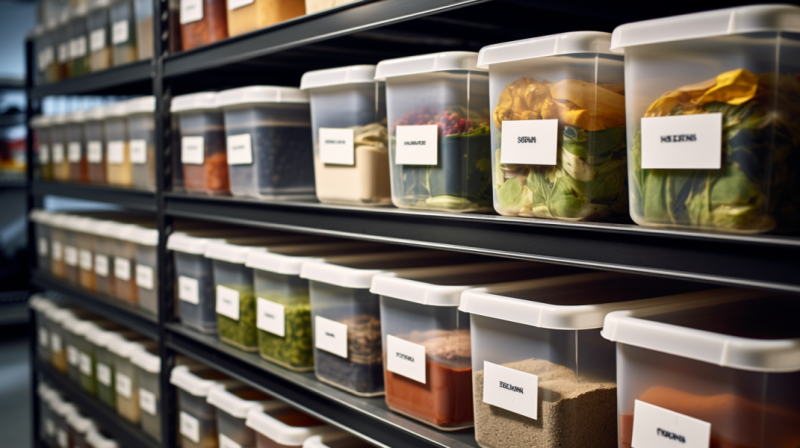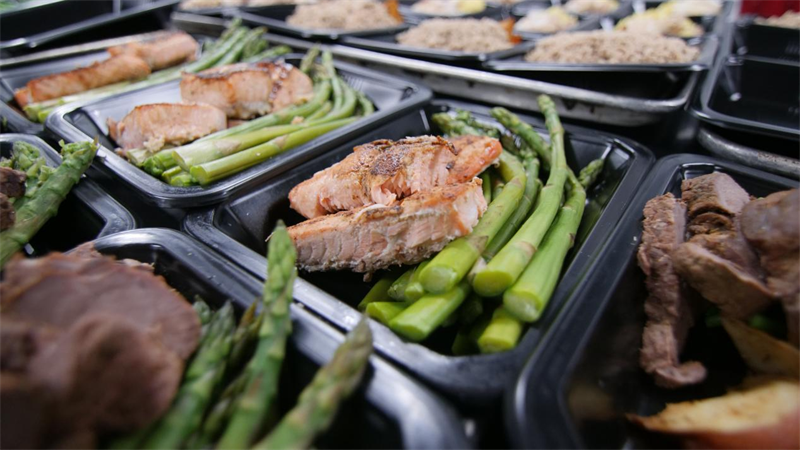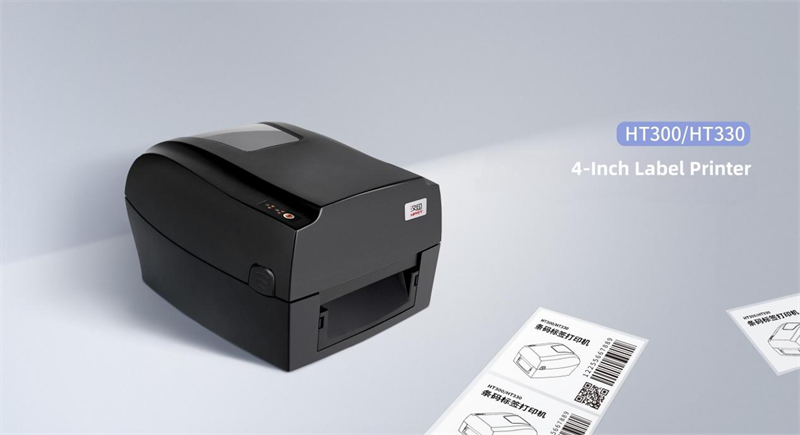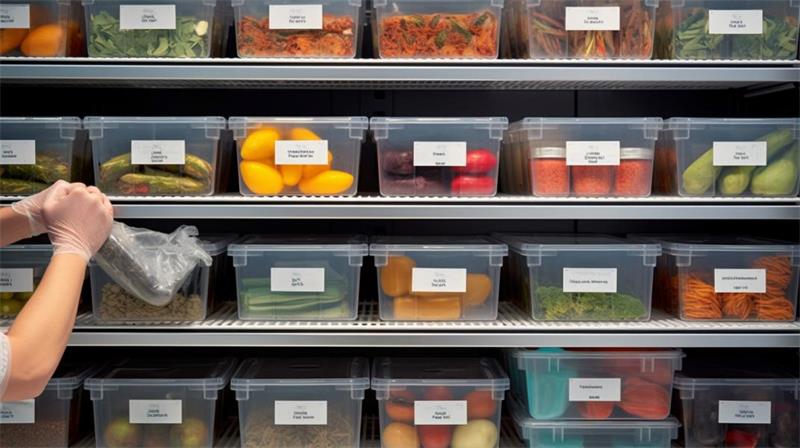How to Label Food in a Commercial Kitchen & Restaurant
We all know the importance of organizing food containers in our personal or home kitchens. It not only helps in easy access but also prevents food wastage. The same principles apply when it comes to a commercial kitchen or a restaurant. Proper organization and labeling are key to efficient operations. In this article, we’ll delve into how to label food in a commercial kitchen or your restaurant with a thermal label printer.

Why Labeling Food is Essential in a Commercial Kitchen or Restaurant
1.Food Safety: Improperly labeled food can be dangerous and lead to disastrous health consequences. Accurate labeling ensures that food items are used before they expire, reducing the risk of foodborne illnesses.
2.Regulatory Compliance: Labeling food is not just a best practice; it’s a legal requirement. Failure to comply can result in hefty fines and even the closure of your establishment.
3.Efficiency: Labels serve as a quick reference, especially crucial during peak hours when every second counts. Commercial kitchen labels allow staff to identify items rapidly, thus minimizing errors and speeding up food preparation.
4.Stock Rotation: With food rotation labels, it’s easier to follow the FIFO (First-In, First-Out) method, ensuring that older stock is used before newer stock, which ultimately reduces waste and saves money.
Choosing the Right Food Labels
In restaurants and commercial kitchens, staff handle a wide variety of ingredients, including fresh produce, pickled items, and pre-made sauces. These ingredients are often portioned into containers like glass jars or plastic boxes and sealed to maintain freshness.

So, when it comes to labelling food containers, what factors should you consider to ensure each item is meticulously marked?
1.Determine Label Content and Size
Containers holding vegetables, seafood, or various pre-packaged foods (such as chicken breast, berries, deli meats, and sliced tomatoes) typically require food rotation labels that specify the following:
● Food Name
● Quantity
● Preparation Date
● Expiry Date
● Employee Responsible
● Storage Conditions
Clearly indicating the preparation and expiry dates is crucial for food safety. Additionally, marking the initials or names of kitchen staff aids in accountability should issues arise. Given the extensive information that needs to be included on kitchen labels, recommended sizes are usually 56x51mm, 55x50mm, or 56x76mm.
2.Choose the Right Label Material
The choice of label material should be based on the food’s storage environment, such as a refrigerator, freezer, or pantry. Paper labels are suitable for dry conditions, whereas more durable PET labels are a better choice for freezers or humid environments. Considering that food labels will be updated regularly, removable food labels that leave no residue can simplify cleaning.
In real-world scenarios, restaurant and kitchen staff often prefer using daydots labels. These labels usually employ a color-coded system, where each color represents a specific day of the week. This not only helps kitchen staff quickly identify the preparation date of food items but also facilitates the timely removal of items that are expired or about to expire.
Therefore, when choosing food rotation labels for a commercial kitchen, consider the required label size, material, and color-coding style to make an appropriate selection.
Choosing Between Handwriting and a Kitchen Label Printer for Food Labeling
Concerning how to label food in a commercial kitchen, you’re faced with two primary options: handwriting or using a commercial kitchen label printer. At first glance, handwriting may seem convenient; all you need is a pen and a roll of label paper. However, in the fast-paced environment of commercial kitchens and restaurants, handwriting comes with its own set of challenges:
1.Error-Prone: Handwriting large volumes of information increases the risk of errors, which could compromise food safety.
2.Legibility Concerns: Inconsistent or sloppy handwriting can make labels hard to read, thereby increasing the risk of confusion and mistakes.
3.Space Limitations: Handwritten labels can become cramped when you need to include a lot of information, making them even harder to read.
4.Durability Issues: Handwritten labels are more susceptible to smudging or fading, especially in the humid and hot conditions commonly found in kitchens.
Due to these challenges, many commercial kitchens and restaurants are now leaning towards using thermal label printers to address these issues. One highly recommended option is the HPRT HT300 4-inch thermal transfer printer.

HPRT has long been focused on providing efficient and reliable printing solutions for various industries, including logistics, warehousing, manufacturing, healthcare, apparel, and foodservice. In the unique environment of commercial kitchens and restaurants, a high-performing kitchen date label printer like the HPRT HT300 can make your food preparation and management tasks much more streamlined and efficient.
Benefits of the HPRT HT300 Thermal Transfer Label Printer
1.Versatile Printing Modes: The thermal printer supports both direct thermal and thermal transfer printing, making it compatible with various label materials like thermal paper, paper labels, PET waterproof labels, removable labels, and freezer-grade labels.
2.Robust Design: It features an integrated core structure and a high-quality coated print head, ensuring durability and low noise levels.
3.Precision Printing: Equipped with transmissive and reflective sensors, the thermal transfer printer offers precise positioning for round, square, or irregularly shaped labels, ensuring clear and full-bodied text.
4.Flexible Printing Width: It can accommodate a 300m ribbon and offers adjustable print widths, supporting label widths from 20 to 118mm.
5.Multiple Connectivity Options: The thermal barcode printer offers a variety of interfaces, including optional Bluetooth connectivity for easy pairing with mobile devices.
This compact 4-inch restaurant label printer is easy to operate and comes with Bartender label editing software. To enhance the user experience, HPRT has developed free label design softwarewith a rich set of templates and editing tools, available for download on mobile devices. Kitchen and restaurant staff can edit and print labels on-site, and saved label templates can be stored in the cloud for easy retrieval.
In addition to printing food labels, food rotation labels, and daydots food labels, the HPRT HT300 can also print kitchen management signs and warning signs. The labels printed using thermal transfer technology are durable and long-lasting, making them ideal for extended use.

Labeling food in a commercial kitchen or restaurant is more than just a regulatory requirement; it’s a critical component for ensuring efficient and safe operations. The HPRT HT300 thermal transfer label printer addresses the challenges commonly associated with handwritten labels, offering a more convenient and efficient solution for kitchen management. This printer is designed to enhance the overall operational efficiency of your commercial kitchen or restaurant.
So, the next time you consider labels for food containers, keep in mind that even a seemingly minor step like proper labeling can make a significant impact on the smooth running of your commercial kitchen or restaurant.








